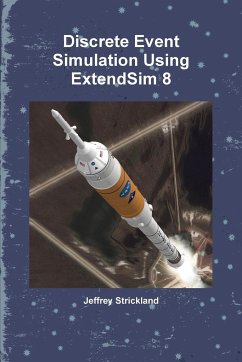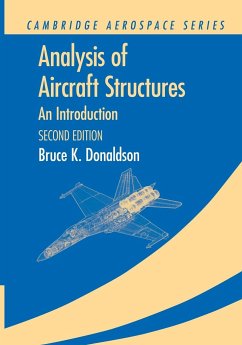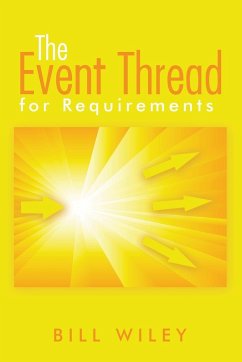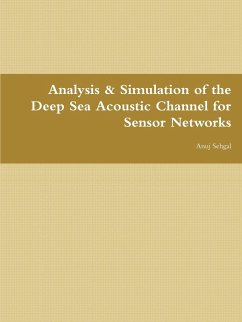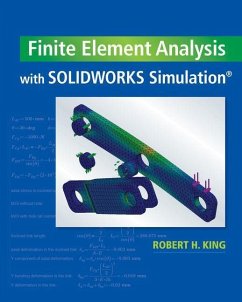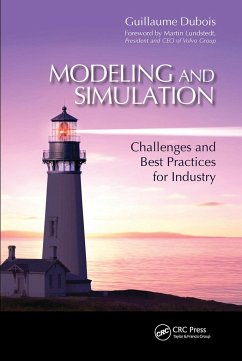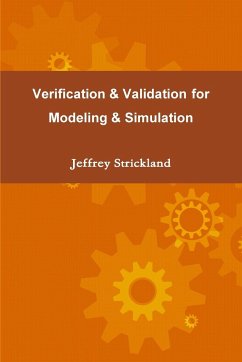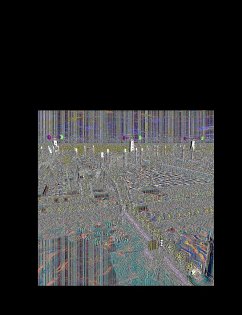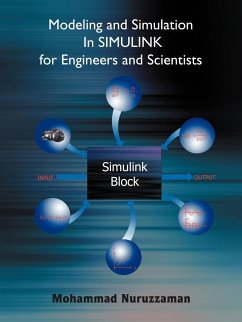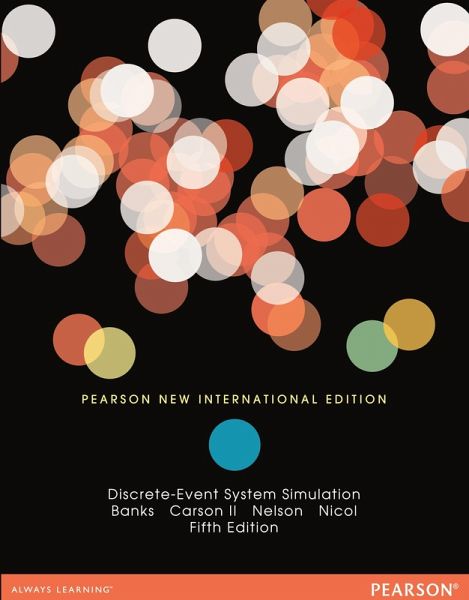
Discrete-Event System Simulation

PAYBACK Punkte
37 °P sammeln!
For junior- and senior-level simulation courses in engineering, business, or computer science.
While most books on simulation focus on particular software tools, Discrete Event System Simulation examines the principles of modeling and analysis that translate to all such tools. This language-independent text explains the basic aspects of the technology, including the proper collection and analysis of data, the use of analytic techniques, verification and validation of models, and designing simulation experiments. It offers an up-to-date treatment of simulation of manufacturing and material handling systems, computer systems, and computer networks.
Students and instructors will find a variety of resources at the associated website, www.bcnn.net/ , including simulation source code for download, additional exercises and solutions, web links and errata. Features + Benefits
Simulation of Communications Systems includes new material on simulation beta distribution, negative binomial distribution and non-stationary processes.
Subset selection methods used for output analysis of several alternatives are discussed.
The text’s Companion Website includes software downloads, links and Power Point Lecture Slides, and extends the text material.
Numerous solved examples enhance understanding of concepts.
Abundant figures, tables and end-chapter exercises are provided.
Application topics promote understanding of real-world uses.
Interpretation of simulation software output explains how to use software tools correctly.
Discussion of simple tools for complex input modeling problems develops more realistic valid models.
I Introduction to Discrete-Event System Simulation 1
Chapter 1 Introduction to Simulation 3
1.1 When Simulation Is the Appropriate Tool 4
1.2 When Simulation Is Not Appropriate 4
1.3 Advantages and Disadvantages of Simulation 5
1.4 Areas of Application 7
1.5 Systems and System Environment 9
1.6 Components of a System 9
1.7 Discrete and Continuous Systems 11
1.8 Model of a System 12
1.9 Types of Models 13
1.10 Discrete-Event System Simulation 13
1.11 Steps in a Simulation Study 14
References 18
Exercises 19
Chapter 2 Simulation Examples 21
2.1 Simulation of Queueing Systems 22
2.2 Simulation of Inventory Systems 39
2.3 Other Examples of Simulation 46
2.4 Summary 57
References 57
Exercises 57
Chapter 3 General Principles 67
3.1 Concepts in Discrete-Event Simulation 68
3.1.1 The Event Scheduling/Time Advance Algorithm 71
3.1.2 World Views 74
3.1.3 Manual Simulation Using Event Scheduling 77
3.2 List Processing 86
3.2.1 Lists: Basic Properties and Operations 87
3.2.2 Using Arrays for List Processing 88
3.2.3 Using Dynamic Allocation and Linked Lists 90
3.2.4 Advanced Techniques 92
3.3 Summary 92
References 92
Exercises 93
Chapter 4 Simulation Software 95
4.1 History of Simulation Software 96
4.1.1 The Period of Search (1955—60) 97
4.1.2 The Advent (1961—65) 97
4.1.3 The Formative Period (1966—70) 97
4.1.4 The Expansion Period (1971—78) 98
4.1.5 Consolidation and Regeneration (1979—86) 98
4.1.6 Integrated Environments (1987—Present) 99
4.2 Selection of Simulation Software 99
4.3 An Example Simulation 102
4.4 Simulation in Java 104
4.5 Simulation in GPSS 112
4.6 Simulation in SSF 117
4.7 Simulation Software 120
4.7.1 Arena 122
4.7.2 AutoMod 123
4.7.3 Extend 124
4.7.4 Flexsim 124
4.7.5 Micro Saint 125
4.7.6 ProModel 125
4.7.7 QUEST 126
4.7.8 SIMUL8 127
4.7.9 WITNESS 128
4.8 Experimentation and Statistical-Analysis Tools 128
4.8.1 Common Features 128
4.8.2 Products 129
References 131
Exercises 132
II Mathematical and Statistical Models 147
Chapter 5 Statistical Models in Simulation 149
5.1 Review of Terminology and Concepts 150
5.2 Useful Statistical Models 156
5.3 Discrete Distributions 160
5.4 Continuous Distributions 166
5.5 Poisson Process 186
5.5.1 Properties of a Poisson Process 188
5.5.2 Nonstationary Poisson Process 189
5.6 Empirical Distributions 190
5.7 Summary 193
References 193
Exercises 193
Chapter 6 Queueing Models 201
6.1 Characteristics of Queueing Systems 202
6.1.1 The Calling Population 202
6.1.2 System Capacity 204
6.1.3 The Arrival Process 204
6.1.4 Queue Behavior and Queue Discipline 205
6.1.5 Service Times and the Service Mechanism 206
6.2 Queueing Notation 208
6.3 Long-Run Measures of Performance of Queueing Systems 208
6.3.1 Time-Average Number in System L 209
6.3.2 Average Time Spent in System Per Customer w 211
6.3.3 The Conservation Equation: L = λw 212
6.3.4 Server Utilization 213
6.3.5 Costs in Queueing Problems 218
6.4 Steady-State Behavior of Infinite-Population Markovian Models 220
6.4.1 Single-Server Queues with Poisson Arrivals and Unlimited Capacity: M/G/1 221
6.4.2 Multiserver Queue: M/M/c/∞/∞ 227
6.4.3 Multiserver Queues with Poisson Arrivals and Limited Capacity: M/M/c/N/∞ 233
6.5 Steady-State Behavior of Finite-Population Models (M/M/c/K/K) 235
6.6 Networks of Queues 239
6.7 Summary 241
References 242
Exercises 243
III Random Numbers 249
Chapter 7 Random-Number Generation 251
7.1 Properties of Random Numbers 251
7.2 Generation of Pseudo-Random Numbers 252
7.3 Techniques for Generating Random Numbers 253
7.3.1 Linear Congruential Method 254
7.3.2 Combined Linear Congruential Generators 257
7.3.3 Random-Number Streams 259
7.4 Tests for Random Numbers 260
7.4.1 Frequency Tests 261
7.4.2 Tests for Autocorrelation 265
7.5 Summary 267
References 268
Exercises 269
Chapter 8 Random-Variate Generation 272
8.1 Inverse-Transform Technique 273
8.1.1 Exponential Distribution 273
8.1.2 Uniform Distribution 276
8.1.3 Weibull Distribution 277
8.1.4 Triangular Distribution 278
8.1.5 Empirical Continuous Distributions 279
8.1.6 Continuous Distributions without a Closed-Form Inverse 283
8.1.7 Discrete Distributions 284
8.2 Acceptance—Rejection Technique 289
8.2.1 Poisson Distribution 290
8.2.2 Nonstationary Poisson Process 293
8.2.3 Gamma Distribution 294
8.3 Special Properties 296
8.3.1 Direct Transformation for the Normal and Lognormal Distributions 296
8.3.2 Convolution Method 298
8.3.3 More Special Properties 299
8.4 Summary 299
References 299
Exercises 300
IV Analysis of Simulation Data 305
Chapter 9 Input Modeling 307
9.1 Data Collection 308
9.2 Identifying the Distribution with Data 310
9.2.1 Histograms 310
9.2.2 Selecting the Family of Distributions 313
9.2.3 Quantile—Quantile Plots 316
9.3 Parameter Estimation 319
9.3.1 Preliminary Statistics: Sample Mean and Sample Variance 319
9.3.2 Suggested Estimators 321
9.4 Goodness-of-Fit Tests 326
9.4.1 Chi-Square Test 327
9.4.2 Chi-Square Test with Equal Probabilities 329
9.4.3 Kolmogorov—Smirnov Goodness-of-Fit Test 331
9.4.4 p-Values and “Best Fits” 333
9.5 Fitting a Nonstationary Poisson Process 334
9.6 Selecting Input Models without Data 335
9.7 Multivariate and Time-Series Input Models 337
9.7.1 Covariance and Correlation 337
9.7.2 Multivariate Input Models 338
9.7.3 Time-Series Input Models 340
9.7.4 The Normal-to-Anything Transformation 342
9.8 Summary 344
References 345
Exercises 346
Chapter 10 Verification and Validation of Simulation Models 354
10.1 Model-Building, Verification, and Validation 355
10.2 Verification of Simulation Models 356
10.3 Calibration and Validation of Models 361
10.3.1 Face Validity 362
10.3.2 Validation of Model Assumptions 362
10.3.3 Validating Input—Output Transformations 363
10.3.4 Input—Output Validation: Using Historical Input Data 374
10.3.5 Input—Output Validation: Using a Turing Test 378
10.4 Summary 379
References 379
Exercises 381
Chapter 11 Output Analysis for a Single Model 383
11.1 Types of Simulations with Respect to Output Analysis 384
11.2 Stochastic Nature of Output Data 387
11.3 Measures of Performance and Their Estimation 390
11.3.1 Point Estimation 390
11.3.2 Confidence-Interval Estimation 392
11.4 Output Analysis for Terminating Simulations 393
11.4.1 Statistical Background 394
11.4.2 Confidence Intervals with Specified Precision 397
11.4.3 Quantiles 399
11.4.4 Estimating Probabilities and Quantiles from Summary Data 400
11.5 Output Analysis for Steady-State Simulations 402
11.5.1 Initialization Bias in St
While most books on simulation focus on particular software tools, Discrete Event System Simulation examines the principles of modeling and analysis that translate to all such tools. This language-independent text explains the basic aspects of the technology, including the proper collection and analysis of data, the use of analytic techniques, verification and validation of models, and designing simulation experiments. It offers an up-to-date treatment of simulation of manufacturing and material handling systems, computer systems, and computer networks.
Students and instructors will find a variety of resources at the associated website, www.bcnn.net/ , including simulation source code for download, additional exercises and solutions, web links and errata. Features + Benefits
Simulation of Communications Systems includes new material on simulation beta distribution, negative binomial distribution and non-stationary processes.
Subset selection methods used for output analysis of several alternatives are discussed.
The text’s Companion Website includes software downloads, links and Power Point Lecture Slides, and extends the text material.
Numerous solved examples enhance understanding of concepts.
Abundant figures, tables and end-chapter exercises are provided.
Application topics promote understanding of real-world uses.
Interpretation of simulation software output explains how to use software tools correctly.
Discussion of simple tools for complex input modeling problems develops more realistic valid models.
I Introduction to Discrete-Event System Simulation 1
Chapter 1 Introduction to Simulation 3
1.1 When Simulation Is the Appropriate Tool 4
1.2 When Simulation Is Not Appropriate 4
1.3 Advantages and Disadvantages of Simulation 5
1.4 Areas of Application 7
1.5 Systems and System Environment 9
1.6 Components of a System 9
1.7 Discrete and Continuous Systems 11
1.8 Model of a System 12
1.9 Types of Models 13
1.10 Discrete-Event System Simulation 13
1.11 Steps in a Simulation Study 14
References 18
Exercises 19
Chapter 2 Simulation Examples 21
2.1 Simulation of Queueing Systems 22
2.2 Simulation of Inventory Systems 39
2.3 Other Examples of Simulation 46
2.4 Summary 57
References 57
Exercises 57
Chapter 3 General Principles 67
3.1 Concepts in Discrete-Event Simulation 68
3.1.1 The Event Scheduling/Time Advance Algorithm 71
3.1.2 World Views 74
3.1.3 Manual Simulation Using Event Scheduling 77
3.2 List Processing 86
3.2.1 Lists: Basic Properties and Operations 87
3.2.2 Using Arrays for List Processing 88
3.2.3 Using Dynamic Allocation and Linked Lists 90
3.2.4 Advanced Techniques 92
3.3 Summary 92
References 92
Exercises 93
Chapter 4 Simulation Software 95
4.1 History of Simulation Software 96
4.1.1 The Period of Search (1955—60) 97
4.1.2 The Advent (1961—65) 97
4.1.3 The Formative Period (1966—70) 97
4.1.4 The Expansion Period (1971—78) 98
4.1.5 Consolidation and Regeneration (1979—86) 98
4.1.6 Integrated Environments (1987—Present) 99
4.2 Selection of Simulation Software 99
4.3 An Example Simulation 102
4.4 Simulation in Java 104
4.5 Simulation in GPSS 112
4.6 Simulation in SSF 117
4.7 Simulation Software 120
4.7.1 Arena 122
4.7.2 AutoMod 123
4.7.3 Extend 124
4.7.4 Flexsim 124
4.7.5 Micro Saint 125
4.7.6 ProModel 125
4.7.7 QUEST 126
4.7.8 SIMUL8 127
4.7.9 WITNESS 128
4.8 Experimentation and Statistical-Analysis Tools 128
4.8.1 Common Features 128
4.8.2 Products 129
References 131
Exercises 132
II Mathematical and Statistical Models 147
Chapter 5 Statistical Models in Simulation 149
5.1 Review of Terminology and Concepts 150
5.2 Useful Statistical Models 156
5.3 Discrete Distributions 160
5.4 Continuous Distributions 166
5.5 Poisson Process 186
5.5.1 Properties of a Poisson Process 188
5.5.2 Nonstationary Poisson Process 189
5.6 Empirical Distributions 190
5.7 Summary 193
References 193
Exercises 193
Chapter 6 Queueing Models 201
6.1 Characteristics of Queueing Systems 202
6.1.1 The Calling Population 202
6.1.2 System Capacity 204
6.1.3 The Arrival Process 204
6.1.4 Queue Behavior and Queue Discipline 205
6.1.5 Service Times and the Service Mechanism 206
6.2 Queueing Notation 208
6.3 Long-Run Measures of Performance of Queueing Systems 208
6.3.1 Time-Average Number in System L 209
6.3.2 Average Time Spent in System Per Customer w 211
6.3.3 The Conservation Equation: L = λw 212
6.3.4 Server Utilization 213
6.3.5 Costs in Queueing Problems 218
6.4 Steady-State Behavior of Infinite-Population Markovian Models 220
6.4.1 Single-Server Queues with Poisson Arrivals and Unlimited Capacity: M/G/1 221
6.4.2 Multiserver Queue: M/M/c/∞/∞ 227
6.4.3 Multiserver Queues with Poisson Arrivals and Limited Capacity: M/M/c/N/∞ 233
6.5 Steady-State Behavior of Finite-Population Models (M/M/c/K/K) 235
6.6 Networks of Queues 239
6.7 Summary 241
References 242
Exercises 243
III Random Numbers 249
Chapter 7 Random-Number Generation 251
7.1 Properties of Random Numbers 251
7.2 Generation of Pseudo-Random Numbers 252
7.3 Techniques for Generating Random Numbers 253
7.3.1 Linear Congruential Method 254
7.3.2 Combined Linear Congruential Generators 257
7.3.3 Random-Number Streams 259
7.4 Tests for Random Numbers 260
7.4.1 Frequency Tests 261
7.4.2 Tests for Autocorrelation 265
7.5 Summary 267
References 268
Exercises 269
Chapter 8 Random-Variate Generation 272
8.1 Inverse-Transform Technique 273
8.1.1 Exponential Distribution 273
8.1.2 Uniform Distribution 276
8.1.3 Weibull Distribution 277
8.1.4 Triangular Distribution 278
8.1.5 Empirical Continuous Distributions 279
8.1.6 Continuous Distributions without a Closed-Form Inverse 283
8.1.7 Discrete Distributions 284
8.2 Acceptance—Rejection Technique 289
8.2.1 Poisson Distribution 290
8.2.2 Nonstationary Poisson Process 293
8.2.3 Gamma Distribution 294
8.3 Special Properties 296
8.3.1 Direct Transformation for the Normal and Lognormal Distributions 296
8.3.2 Convolution Method 298
8.3.3 More Special Properties 299
8.4 Summary 299
References 299
Exercises 300
IV Analysis of Simulation Data 305
Chapter 9 Input Modeling 307
9.1 Data Collection 308
9.2 Identifying the Distribution with Data 310
9.2.1 Histograms 310
9.2.2 Selecting the Family of Distributions 313
9.2.3 Quantile—Quantile Plots 316
9.3 Parameter Estimation 319
9.3.1 Preliminary Statistics: Sample Mean and Sample Variance 319
9.3.2 Suggested Estimators 321
9.4 Goodness-of-Fit Tests 326
9.4.1 Chi-Square Test 327
9.4.2 Chi-Square Test with Equal Probabilities 329
9.4.3 Kolmogorov—Smirnov Goodness-of-Fit Test 331
9.4.4 p-Values and “Best Fits” 333
9.5 Fitting a Nonstationary Poisson Process 334
9.6 Selecting Input Models without Data 335
9.7 Multivariate and Time-Series Input Models 337
9.7.1 Covariance and Correlation 337
9.7.2 Multivariate Input Models 338
9.7.3 Time-Series Input Models 340
9.7.4 The Normal-to-Anything Transformation 342
9.8 Summary 344
References 345
Exercises 346
Chapter 10 Verification and Validation of Simulation Models 354
10.1 Model-Building, Verification, and Validation 355
10.2 Verification of Simulation Models 356
10.3 Calibration and Validation of Models 361
10.3.1 Face Validity 362
10.3.2 Validation of Model Assumptions 362
10.3.3 Validating Input—Output Transformations 363
10.3.4 Input—Output Validation: Using Historical Input Data 374
10.3.5 Input—Output Validation: Using a Turing Test 378
10.4 Summary 379
References 379
Exercises 381
Chapter 11 Output Analysis for a Single Model 383
11.1 Types of Simulations with Respect to Output Analysis 384
11.2 Stochastic Nature of Output Data 387
11.3 Measures of Performance and Their Estimation 390
11.3.1 Point Estimation 390
11.3.2 Confidence-Interval Estimation 392
11.4 Output Analysis for Terminating Simulations 393
11.4.1 Statistical Background 394
11.4.2 Confidence Intervals with Specified Precision 397
11.4.3 Quantiles 399
11.4.4 Estimating Probabilities and Quantiles from Summary Data 400
11.5 Output Analysis for Steady-State Simulations 402
11.5.1 Initialization Bias in St
For junior- and senior-level simulation courses in engineering, business, or computer science. While most books on simulation focus on particular software tools, Discrete-Event System Simulation examines the principles of modeling and analysis that translate to all such tools. This language-independent text explains the basic aspects of the technology, including the proper collection and analysis of data, the use of analytic techniques, verification and validation of models, and designing simulation experiments. It offers an up-to-date treatment of simulation of manufacturing and material handling systems, computer systems, and computer networks.




